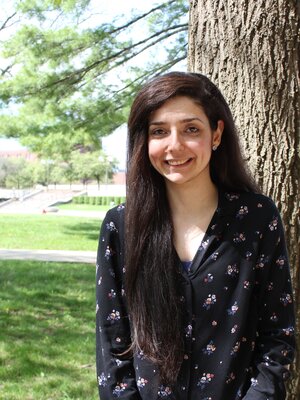
Dissertation: “A Map of This Place: Memory and the Afterlives of Removal"
Certified Spring 2021
My research interests are propelled by two avenues for theorizing the dynamics of diasporic remembrance practices. First, the migration of memory, or, how traumatic cultural memory is carried and mobilized across territorial, generational, and social boundaries. Second, migration and memory, or, how diasporas engage a host nation’s memory work as they stake claims for belonging. My approach to the study of memory relates discourses in Ottoman, Middle East, and Armenian studies with discourses in Indigenous, settler colonial, and American studies.More specifically, my dissertation, “A Map of This Place: Memory and the Afterlives of Removal,” centers the category of indigeneity to reframe questions of place, space, movement, and belonging articulated in cultural memory studies. Memory studies has employed “afterlives” as a capacious term to mean the reception, remediation, or appropriation of literary texts and cultural phenomena such as feminist activism. Yet, it has not fully embraced the concept of “afterlives” as it is employed by Black studies scholars to address the legacies of transatlantic slavery, including Saidiya Hartman. This dissonance reveals that in its attention to Europe-centered sites of atrocities, memory studies has tended to focus on event-based, temporally bound collective violence. In “A Map of This Place,” I invoke “afterlives” to name the legacies of the dispossession and forced migrations of Indigenous peoples in diverse settler colonial contexts. My project thus offers a contrapuntal study of Armenian American, Palestinian American, and American Indian/First Nations literatures. Each chapter juxtaposes three literary texts, one from each canon. I do so to build theoretical nuance and to make legible rather than erase the tensions that get raised when we bring together the afterlives of structural violence in different geopolitical sites.Working in this way, my project offers “nested memory” to articulate the structure of the intergenerational transmission of memory in the face of the recursivity of trauma. I draw upon the depiction of the space-time nexus in Nancy Kricorian’s prose poem “Homage to Bourj Hammoud” and Mohawk theorist Audra Simpson’s concept of “nested sovereignty” to formulate “nested memory.” In so doing, I expand upon Marianne Hirsch’s concept of “postmemory.” Some of the literary texts that I take up in this dissertation include Three Apples Fell from Heaven (2001) and The Bullet Collection (2003) from the Armenian case, Mornings in Jenin (2010) and Salt Houses (2017) from the Palestinian case, and There There (2017) and As We Have Always Done: Indigenous Freedom Through Radical Resistance (2017) from the American Indian/First Nations case.